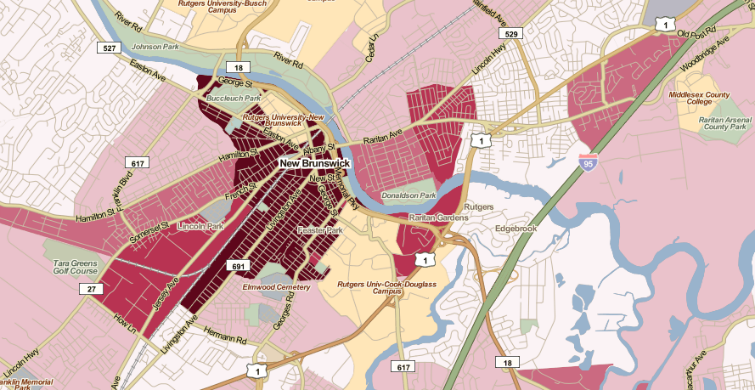Are Students Included in Census Poverty Rates?

We love receiving questions about data here at PolicyMap! Recently, after releasing the 2009-2013 American Community Survey on PolicyMap, a user reached out with an interesting question: are college students included in Census poverty figures? This is an important consideration because, while many students earn income below the poverty level, this does not necessarily mean they are of low socioeconomic status. Thus, including them in poverty statistics can skew a look at the demographic and economic makeup of a local area.
The answer is that yes, some, but not all, students are included in Census poverty figures. Where students are living determines how they are captured in Census poverty figures. Most college students reside in one of three places: a college dormitory, with parents or other relatives, or independently in off-campus apartments.
• College students who live in dormitories are not included in poverty measures. These students are counted in the Census’ group quarters figures (an indicator you can find on PolicyMap under the Housing Tab in “Group Quarters”). All individuals living in group quarters (whether college students living in dorms, prisoners, people living in residential treatment centers, etc.) are excluded from the Census “poverty universe” and thus are not included in poverty statistics.
• College students living at home with family members are always included in family poverty measures. Family households include individuals living at home with their parents, married college students living with spouses, and unmarried students living with their children. Family poverty is determined based on a family’s total income.
• College students living on their own off-campus are included in the Census “poverty universe.” Their poverty status is based on total personal income.
In light of this, colleges and universities can indeed have a significant impact on the demographic and economic make-up of a community. This is especially true in college towns, but can also be true in larger cities with a sizeable university population as well. In the map below, you can see how that the area of New Brunswick, New Jersey, has extremely high poverty around Rutgers University. This gives a false sense that the university community is more in need than the predominantly immigrant non-student community in the south part of the city.
It is worth keeping in mind the impact of student populations on local poverty rates when using the recent tract-level persistent poverty dataset as well. Since persistent poverty was determined based on areas where more than 20% of the population was in poverty over a 30-year period, this determination could be impacted by large student populations. For example, it is likely some of the persistent poverty tracts identified in the map below of New Brunswick have been consistently over the 20% poverty threshold because of the high student population at Rutgers.
If you are interested in reading more about college students and neighborhood poverty calculations, including the Census’ recommendations for how to get local poverty estimates that exclude students, take a look at this paper they published on the issue. And, if you have any data questions for us, please don’t hesitate to reach out!